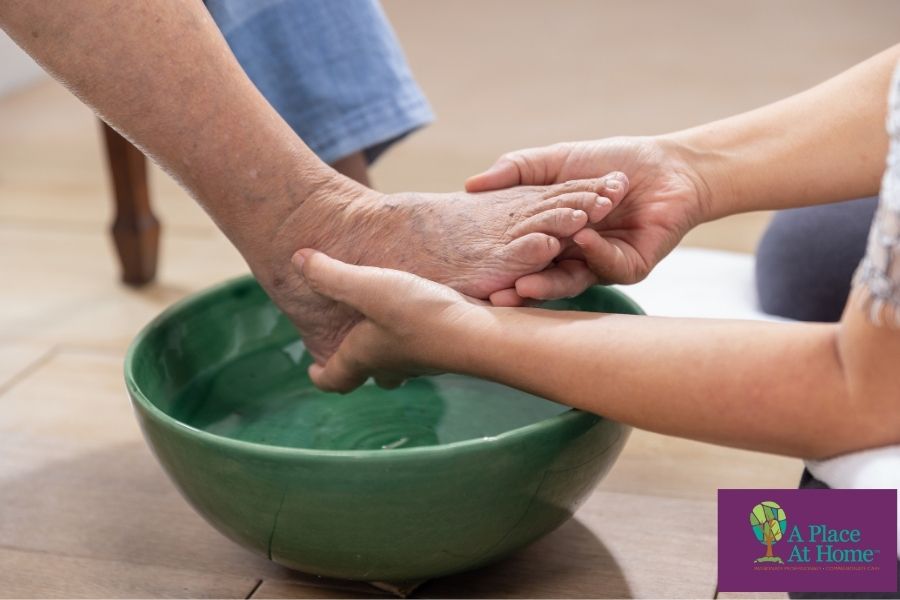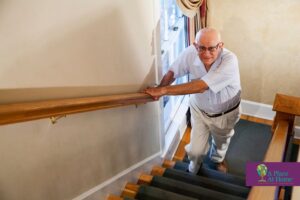
Waking up in the middle of the night with a sharp cramp in the leg is something many older adults are all too familiar with. These painful spasms—often in the calves, feet, or thighs—can strike without warning and leave lingering soreness, making it difficult to fall back asleep. For some seniors, it’s not just an occasional annoyance, but a recurring disruption that affects their comfort, mobility, and sleep quality.
Understanding what causes these cramps and how to prevent them is an important part of maintaining health and well-being in later years. Thankfully, there are effective ways to manage leg cramps and reduce how often they occur.
Why Are Nighttime Leg Cramps Common in Seniors?
There are several reasons older adults experience muscle cramps more frequently, especially at night. As we age, muscle mass naturally decreases, circulation tends to slow, and nerves may become more sensitive. These changes can make muscles more prone to involuntary tightening.
Some common triggers include:
- Dehydration
- Low levels of minerals like potassium, magnesium, and calcium
- Certain medications, including diuretics and statins
- Extended periods of inactivity or sitting
- Tight or shortened muscles, particularly when sleeping with toes pointed
According to clinical research published by the American Family Physician, more than one-third of adults over 60 report experiencing nighttime leg cramps, with prevalence increasing further in adults over 80
7 Practical Ways to Relieve and Prevent Nighttime Leg Cramps
Here are some tried-and-true methods to both ease leg cramps when they occur and reduce how often they happen:
1. Gentle Stretching Before Bed
A short stretching routine can make a noticeable difference. Try focusing on the calves, hamstrings, and feet — the areas most likely to spasm at night.
A simple pre-bed stretch:
Stand an arm’s length from a wall, place one foot behind the other, and lean forward gently while keeping the back heel on the ground. Hold the stretch for 20–30 seconds and repeat on both legs.
Doing this before bed helps relax tight muscles and prepares the body for a more restful night.
2. Drink Water Consistently During the Day
Dehydration is one of the most common — and preventable — causes of muscle cramps. It’s easy to underestimate how much water the body needs, especially as the natural sensation of thirst fades with age.
Aim to sip water regularly throughout the day. If plain water isn’t appealing, try herbal tea or add a splash of citrus or cucumber for flavor. Just be cautious about drinking too much right before bedtime to avoid nighttime bathroom trips.
3. Eat Foods Rich in Potassium and Magnesium
Many seniors benefit from boosting their intake of magnesium and potassium — two essential minerals that play a role in muscle contraction and relaxation. Rather than relying on supplements, it’s often better to get these nutrients from food:
- Potassium: bananas, sweet potatoes, beans, oranges
- Magnesium: almonds, spinach, avocado, whole grains
- Calcium: yogurt, leafy greens, fortified plant-based milk
A simple diet tweak like a banana or handful of almonds in the evening can support muscle health over time.
4. Try a Warm Bath or Heating Pad
When a cramp strikes, applying heat to the muscle can help it relax. A warm compress or heating pad placed on the calf or foot can soothe the area quickly.
For a calming nightly ritual, consider a foot soak in warm water with Epsom salt. Not only is it relaxing, but Epsom salt (magnesium sulfate) can also gently replenish magnesium levels through the skin.
5. Massage the Affected Area
Gentle massage can encourage blood flow and loosen up cramped muscles. For prevention, regular leg massage — especially before bed — can help relax tight areas and reduce muscle stiffness.
Using a small roller or a tennis ball under the foot can also ease tightness in the arches, which sometimes leads to cramping higher up the leg.
6. Adjust Your Sleep Position
Surprisingly, the way we sleep can affect how often we get leg cramps. Sleeping on your back with feet pointing downward can shorten the calf muscles and increase the chance of cramps.
Try these adjustments:
- Place a pillow under your knees to keep legs slightly bent
- Use a rolled towel or small cushion under your ankles
- Avoid heavy blankets that press your feet downward
7. Review Medications With a Healthcare Provider
Some common medications — especially those for high blood pressure, cholesterol, or heart conditions — may contribute to cramps. If leg cramps have become more frequent or painful, it’s worth having a conversation with your doctor or pharmacist to see if your prescriptions might be playing a role.
What About Leg Cramps in the Morning?
While nighttime cramps often steal the spotlight, morning leg cramps are just as disruptive—especially for older adults. Many seniors report experiencing sharp spasms or tightness in the calves, feet, or even the thighs as they wake and begin to move. These cramps typically occur during those first few moments of morning stretching, catching the body off guard after several hours of stillness.
Why Do Morning Leg Cramps Happen?
The most common cause is overnight muscle inactivity. As the body remains still during sleep, circulation slows and muscle fibers may shorten slightly, especially in the lower legs. This, combined with dehydration or a slight imbalance of electrolytes like potassium, magnesium, or calcium, can lead to involuntary muscle contractions when movement resumes in the morning.
Age-related changes in muscle mass and elasticity can also make seniors more prone to these cramps. With aging, muscles lose some flexibility and strength, making them more likely to cramp when stretched too quickly after rest. This can also cause falls.
How Seniors Can Prevent Morning Cramps
Preventing morning cramps often starts with simple routines that gently reintroduce movement to the body after sleep. Here are a few proactive steps to consider:
- Pre-bedtime hydration: Make sure to drink water throughout the evening (but not excessively right before bed to avoid frequent urination). Dehydration is a well-known contributor to muscle cramps.
- Gentle bedtime stretching: Doing light calf, hamstring, and foot stretches before bed helps maintain muscle elasticity overnight.
- Controlled morning movement: When waking, avoid jumping out of bed too quickly. Instead, try this short stretching sequence:
- While lying on your back, gently point and flex your toes 10–15 times.
- Perform ankle circles in both directions.
- Bend your knees and slowly pull them toward your chest one at a time, holding for a few seconds.
- Sit up in bed and stretch your legs out in front of you, reaching toward your toes without forcing the stretch.
- Use a supportive mattress and sleeping posture: A mattress that supports the natural alignment of the spine and hips can also reduce the strain on leg muscles.

How Caregivers Can Help Seniors with Leg Cramps
At A Place At Home – Weston, we’ve had the privilege of supporting many seniors who struggle with leg cramps—those sudden, painful muscle spasms that disrupt sleep and daily comfort. Over the years, our caregivers have learned that managing leg cramps isn’t just about treating symptoms; it’s about offering compassionate, personalized care that helps prevent cramps and improves overall quality of life.
Here’s how our experienced caregivers support seniors dealing with leg cramps:
- Guiding Gentle Stretching and Movement
Our caregivers work closely with seniors to establish simple, effective stretching routines—both before bedtime and in the morning. These gentle movements help ease muscle tightness and improve circulation. When assisting with getting out of bed or moving around, our caregivers ensure every step is slow and safe, reducing the chance of painful cramps caused by sudden movements. - Encouraging Consistent Hydration
We understand how important hydration is to muscle health. Our caregivers remind and encourage seniors to drink fluids regularly throughout the day, tailoring approaches to each individual’s preferences—whether that’s flavored water, herbal teas, or small sips throughout activities. - Supporting Nutrient-Rich Meals
Proper nutrition plays a vital role in preventing cramps. Our team helps plan and prepare meals packed with minerals like potassium, magnesium, and calcium, ensuring seniors receive the nutrients their muscles need to stay strong and healthy. - Monitoring Medications and Symptoms
Since some medications can contribute to cramps, our caregivers stay attentive to any changes or new symptoms. They communicate closely with families and healthcare providers to address concerns quickly and adjust care plans as needed. - Providing Comfort During Cramping Episodes
When cramps do occur, our caregivers offer soothing relief—whether through warm compresses, gentle massage, or adjusting sleeping positions. Their hands-on support brings comfort and reassurance when it’s needed most.
At A Place At Home – Weston, we believe care goes beyond routine tasks. It’s about understanding each senior’s unique needs and helping them live more comfortably and confidently every day—even when faced with challenges like leg cramps.
Give us a call today at (954) 335-9284 to learn about our senior home care services in Weston, Davie, and Hollywood, FL. We offer a free in-home consultation to help you find the right care plan for your loved one.






